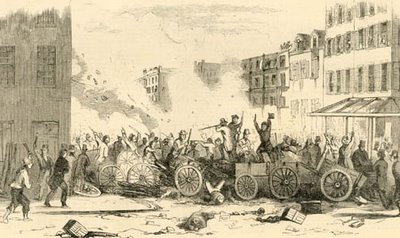|
By the early 1800’s
there was a definite distinction in social classes, and the problem with gangs grew. Gangs usually consisted of individuals
from similar ethnic backgrounds. They united for protection and also for recreation and monetary support.
Gangs saw crime and robbery
as a way to even the odds. They felt that society left them behind, and they had to do whatever they could to get ahead and
survive.
The Forty Thieves Gang was a Manhattan gang that was started
in the 1820’s by a man named Edward Coleman. This gang occupied the five points are on the Lower East Side.
The Forty Thieves Gang was known for acts of robbery and murder. They had an auxiliary of younger members called the Little
Forty Thieves Gang, whose membership consisted of youths as young as 10-years-old. In 1825 the emergence of these gangs caused
officials to acknowledge New York city had a serious gang problem.
During the 1800s the racial tension toward immigrants was
high. At this time Irish gangs were dominant followed by Welsh, Italian, and Jewish gangs.
Immigrants were forced into a second-class citizenship
that made it nearly impossible to achieve the life of happiness and abundance that they sought as they journeyed to America
from their homelands. Trapped in the slums of America, these
groups banded together out of fear for survival.
By the 1850s gangs such as the Dead Rabbits and the Chichesters,
and Bowery Boys gangs of New York City were formed.
These gangs were infamous for gang wars and public displays of violence
and anarchy. They were revered, on the strength of their reputations for wreaking havoc.

|
| Dead Rabbits vs. Bowery Boys |
|

